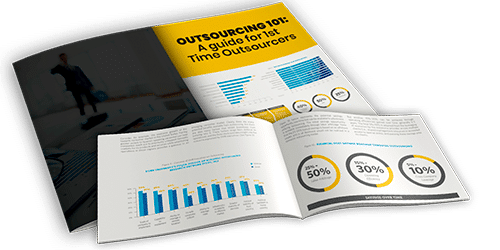2020 has certainly been an interesting year. Many companies went into the year planning to “dip their toes” into the Digital Transformation (“DT”) pool, only to be thrown into the deep end.
The COVID-19 pandemic required organizations to accelerate their transformation, focusing initially on reliable and secure connectivity, combined with access to key data from remote locations. This has laid down the foundation of DT, setting up Artificial Intelligence (“AI”) and Data Analytics as the next level to be built. But will it? Can businesses that are still figuring out what the impact of the pandemic will be on their customers, revenues and profits effectively focus on the implementation of transformational technologies and processes?
Even in the best of times, these types of initiatives can be difficult. According to McKinsey (“The Keys to a Successful Digital Transformation”, October 2018), less than 30% of technology transformations are successful. And digital transformations are even harder to achieve success. Only 16% of organizations said that DT have successfully improved performance in a sustainable fashion.
McKinsey goes on further to state that even digital savvy industries, such as high-tech, telecom, etc. are struggling, with success rates less than 26%. And in more traditional industries, such as oil & gas, automotive and pharma, the success rates fall between 4-11%. If these types of organizations and their level of resources are challenged, how effective will a $1B manufacturing company be in implementing these solutions?
According to Gartner (“The IT Roadmap for Digital Transformation”, 2020), the six key steps in a DT initiative include:
- Assess the current state of digital across your organization.
- Define your digital transformation objectives.
- Outline your digital transformation roadmap.
- Choose the necessary tools/technologies.
- Establish clear leadership.
- Set a realistic budget for your transformation.
This requires organizations to have a structured, disciplined approach to DT, along with knowledgeable and experienced resources, dedicated to the effort.
McKinsey lists the following key factors for successful digital transformations:
- The Management team has a clear vision for the transformation, and established a sense of urgency around the initiative
- Senior leadership encouraged employees to challenge the old ways of working, and to experiment with new ideas
- Digital tools were implemented to make information more accessible across the organization
- Standard operating procedures were modified to include these new technologies
- A collaborative culture was established, across business units and departments, on developing and implementing initiatives
Does this sound like your organization?
So how can most organizations, lacking experienced and available resources, effectively execute Digital Transformation initiatives? The answer lies in focusing on what is core to your business, and what just needs to be done better, faster, more accurately.
Consider that Digital Transformation has several layers to its definition. There are elements of DT, the automation of manual tasks for example, that are focused on productivity and efficiency improvements in the organization. “Touchless” Accounts Payable, or Automated Account Reconciliations and accelerating the closing process, are examples of DT that can free up staff and resources for higher value activities. These initiatives typically come with a clearly defined ROI, as resources can be eliminated or shifted to other tasks.
Other DT initiatives are much more focused on driving revenue and improving engagement with customers. Artificial Intelligence, Customer Data Platforms and Enhanced Data Analytics, Customer and Supplier Self-Service and Interactive Ecommerce, and the Protection of Personal and Proprietary Data, are all examples of things that should be core to the business in 2021 and beyond. In these cases, ROI is harder to define, as it is dependent on projected revenue and margin improvements, but clearly will require near-term investment if your organization wants to remain competitive.
Looking at these initiatives as core vs. transactional allows you to open your eyes to a broader range of potential solutions. The organization should be focused on what is core, but may need to get cost savings from the more transactionally-oriented initiatives to help fund the core investments.
Consider outsourcing as a possible answer
Outsourcing typically focuses on the more transactional tasks in an organization (Accounts Payable, T&E, Customer Invoicing, Customer Support, Cash Application, Collections, Account Reconciliations, Period Closing, etc.) For most organizations, many of these activities can be made more productive and efficient through various DT initiatives. It is not uncommon to improve productivity and performance by 20-30% through automation, process optimization and organizational restructuring.
Further, outsourcing by definition, should provide labor arbitrage savings. For example, nearshore outsourcing can deliver 30-50% cost savings compared to US salaries.
So realistically, outsourcing of transactional functions, combined with DT initiatives, can provide at least 50-60% lower cost than you are currently paying for these activities. What does that translate into in terms of “real money”?
Benchmark data from APQC suggests that a median performing $1B revenue organization has approximately 40 people in its Finance & Accounting organization, performing the above listed transactional activities. If you use an average, fully loaded cost across all roles of $60,000 (based on $50,000 average total compensation plus 20% load), that comes out to about $2.4M in annual cost for these activities.
Note that this cost could be low, depending on where you are located. According to the Robert Half 2020 Salary Guide, markets such as California, New York, New Jersey, Metro DC are at least 30% higher than the national average. It also depends if you are truly a “median” performer, as a bottom performing organization can have almost twice as many resources performing these activities, according to APQC.
If you are able to achieve a 50% reduction in these costs through outsourcing and automation, that comes out to about $1.2M per year in savings, a good way to fund your investment in DT initiatives for core business activities.
So why not just try to implement these DT solutions yourself, and avoid the need for outsourcing?
It comes down to what we were talking about at the beginning of the article. Implementation success rates of 16% (at the most) do not put the odds in your favor of getting the savings that you are looking for.
A top-notch outsourcing firm does transactional work “for a living.” They are experts at not just performing these tasks, but also optimizing processes to achieve the highest levels of productivity and efficiency. They should provide some of the key technologies that drive performance in back office operations, such as Robotics Process Automation (“RPA”), Intelligent Data Capture and OCR, Workflow, Automated Account Reconciliations, Finance Closing Management, Operational Analytics and Dashboards, etc. These technologies should not be disruptive to the operation, but instead “plug into” the existing footprint to improve performance.
Outsourcing 101: A Guide for First Time Outsourcers

The outsourcing firm should also be an expert at implementing these solutions, taking the risk out of the initiatives. And, they should guarantee the outcomes, ensuring the delivery of the expected cost savings and ROI.
Consider some of McKinsey’s key factors in a successful digital transformation initiative: a collaborative operational culture and the redesign of procedures to accommodate the new technologies.
Getting organizations to change and adapt to this “new normal” is a difficult proposition, and often where they fail in achieving digital success. Transitioning to a hybrid outsourcing operation in essence will force the change. It requires the business to rely less on individuals who are “down the hall,” and also less on the current processes, and (if outsourcing is done “right”) more on a collaborative operation, with higher levels of communication and improved processes that leverage the new technologies.
Outsourcing provides the experienced resources, expertise, commitment and focus to successfully deliver on the DT projects, with a guaranteed financial outcome, de-risking the initiative. And, by the way, it will deliver an additional 30-50% cost reduction through lower labor costs.
By using the capabilities of an outsourcing provider, you can now focus on those DT initiatives that are more core to your enterprise, allocating resources that are freed up from the weight of transactional activities. You will also get the funding needed for the investments in Digital Technologies (and experienced resources to implement them) that are business critical, but may not show an immediate ROI.
This should help you to “improve the odds” on Digital Transformation success.



